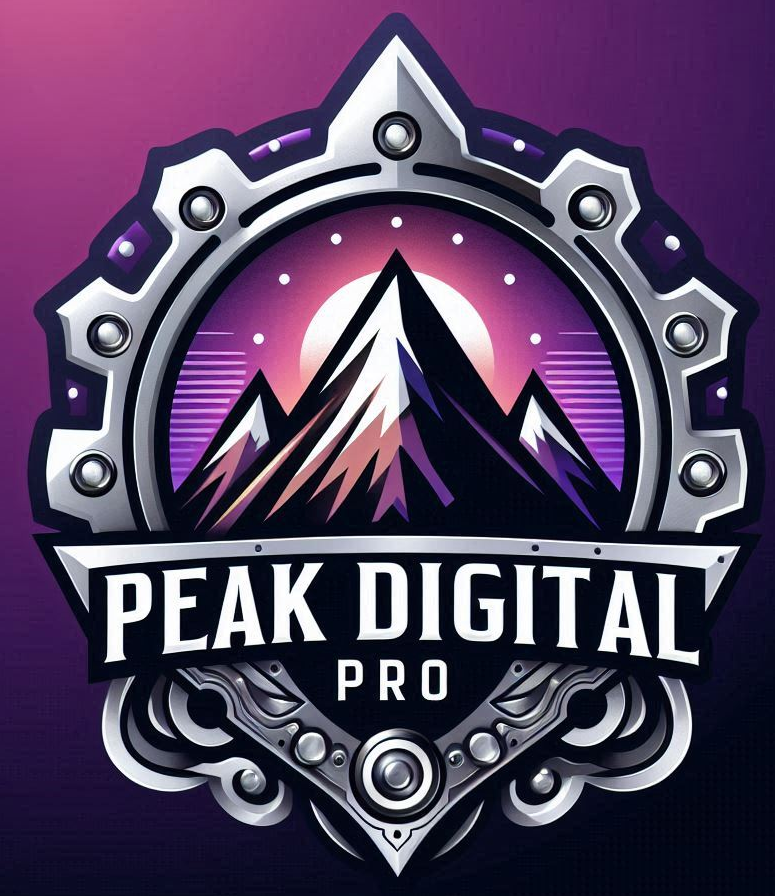Optimizing Website Forms: Boost Conversions for Colorado Businesses
Website forms decide if a customer stays or leaves. A single confusing field can cost you more leads than you think. Research shows that each added form field can drop completion rates by up to 10 percent . Most businesses believe longer forms gather better data, yet the real secret to skyrocketing conversions lies in making forms as effortless and trustworthy as possible. Ready to rethink everything you thought you knew about online forms?
Table of Contents
Quick Summary
| Takeaway | Explanation |
|---|---|
| Simplify form design | Reduce complexity by minimizing fields and ensuring clear instructions. |
| Enhance user trust | Use security badges and privacy guarantees to reassure users during submission. |
| Optimize for mobile | Ensure your forms are responsive and accessible across all devices. |
| Track performance metrics | Monitor conversion rates and user behaviors to identify improvement areas. |
| Continuous testing | Regularly refine forms based on user feedback and analytics insights. |
Understanding User Behavior on Website Forms
Website forms are critical touchpoints where potential customers either convert or abandon their journey. Understanding the psychological and technical factors that influence user interactions can dramatically improve form design and conversion rates.
The Psychology of Form Interaction
Users approach website forms with a mixture of intention and hesitation. Research from the National Institute of Standards and Technology reveals that form complexity directly impacts user comprehension and satisfaction. People naturally seek simplicity and clarity when providing personal information. The more cognitive effort required to complete a form, the higher the likelihood of abandonment.
Key psychological barriers include perceived time investment, privacy concerns, and unclear instructions. Businesses must design forms that feel intuitive, secure, and respectful of the user’s mental bandwidth. This means minimizing unnecessary fields, providing clear guidance, and creating a sense of trust through transparent communication.
Friction Points in Form Design
Form design contains numerous potential friction points that can discourage user completion. Usability experts at Nielsen Norman Group highlight several critical areas where businesses often lose potential conversions:
To help clarify the main friction points users encounter in website forms, here’s a summary table outlining each issue and its impact.
| Friction Point | Description | Impact on User Experience |
|---|---|---|
| Input Complexity | Long forms with many fields overload users | Increases abandonment |
| Unclear Error Messages | Vague or harsh error notifications frustrate users | Reduces trust, adds confusion |
| Mobile Responsiveness | Forms that don’t adapt to screens deter mobile users | Causes immediate dropout |
- Input Complexity : Long forms with multiple required fields create cognitive overload
- Unclear Error Messages : Vague or harsh error notifications frustrate users
- Mobile Responsiveness : Forms that do not adapt seamlessly to different screen sizes create immediate user dropout
Successful form design requires a deep understanding of user expectations and technological constraints. Businesses must create a delicate balance between collecting necessary information and maintaining user comfort.
Optimizing for User Trust and Completion
Converting form visitors requires more than technical design. It demands a strategic approach that prioritizes user experience and psychological comfort. This means implementing visual cues that signal security, providing immediate validation feedback, and creating a sense of progression.
Simple strategies like showing password strength meters, displaying SSL security badges, and offering clear privacy policy links can significantly reduce user anxiety. The goal is to transform forms from transactional interfaces into trust-building interactions that make users feel valued and secure.
By understanding the nuanced behaviors and psychological triggers that influence form completion, Colorado businesses can develop more effective lead generation strategies that convert casual visitors into committed customers.
Essential Elements for High-Converting Forms
Designing high-converting website forms requires a strategic approach that balances information gathering with user experience. The most successful forms create a seamless, intuitive pathway that encourages users to complete their interaction with minimal friction.
Strategic Form Structure and Layout
Research from ConversionXL demonstrates that form layout significantly impacts conversion rates. The visual arrangement of form elements can either invite or discourage user engagement. Businesses must prioritize a clean, logical design that guides users naturally through the information collection process.
Key structural considerations include vertical form layouts, which have been shown to improve completion rates by reducing cognitive load. Placing labels directly above input fields creates a clear visual hierarchy and helps users understand exactly what information is required. Usability experts recommend keeping form designs simple and predictable, ensuring that users can quickly comprehend and complete each step.
Minimizing Cognitive Friction
The most effective forms reduce user effort through strategic design choices. This means carefully selecting and positioning form fields to collect only essential information. Field reduction becomes a critical strategy for improving conversion rates. Each additional field exponentially increases the likelihood of user abandonment.
Critical elements that minimize cognitive friction include:
- Progressive Disclosure : Revealing form fields incrementally
- Smart Default Values : Pre-filling known information
- Clear Input Validation : Providing immediate, helpful feedback
- Adaptive Form Design : Dynamically adjusting based on user input
Businesses should view forms not as data collection tools, but as user experience opportunities. The goal is to make providing information feel effortless and intuitive.
Trust and Conversion Optimization
Converting form visitors requires more than technical design. Trust signals play a crucial role in user willingness to share information. Implementing visual cues that communicate security and professionalism can dramatically improve form completion rates.
Effective trust-building strategies include displaying security badges, explaining how collected information will be used, and providing clear privacy guarantees. Transparency transforms forms from potential barriers into collaborative interactions. Learn more about creating effective lead generation strategies that respect user concerns while capturing valuable business insights.
For Colorado businesses, optimizing website forms is not just about collecting data. It is about creating meaningful connections that transform casual website visitors into engaged potential customers.

Design Tips to Simplify the User Experience
Simplifying user experience in website forms is a nuanced art that requires strategic design thinking and a deep understanding of user psychology. By implementing thoughtful design principles, businesses can transform potentially frustrating interactions into smooth, engaging experiences that encourage form completion.
Visual Design and Information Architecture
Research from Nielsen Norman Group reveals that visual design plays a critical role in form usability. The way information is presented can dramatically impact user comprehension and willingness to complete a form. This means creating a clean, intuitive layout that guides users naturally through the input process.
Key visual design strategies include using ample white space, maintaining consistent typography, and creating clear visual hierarchies. Labels should be positioned directly above input fields, and form sections should be logically grouped. Color psychology also matters – using subtle, professional color schemes can reduce cognitive load and create a sense of trust.
Streamlining Form Complexity
Usability experts from Usability.gov emphasize the importance of minimizing form complexity. Each additional field exponentially increases the likelihood of user abandonment. Businesses must carefully evaluate which information is truly essential and eliminate unnecessary inputs.
Effective strategies for streamlining forms include:
- Conditional Logic : Dynamically showing or hiding fields based on previous responses
- Autofill Capabilities : Leveraging browser technologies to reduce manual input
- Inline Validation : Providing immediate feedback as users complete each field
- Progressive Disclosure : Revealing form sections incrementally to prevent overwhelming users

The goal is to create a form that feels more like a conversation and less like an interrogation. By anticipating user needs and reducing cognitive friction, businesses can significantly improve form completion rates.
Mobile and Accessibility Considerations
Designing forms that work seamlessly across different devices and for users with varied abilities is no longer optional. Mobile responsiveness and accessibility are critical components of a user-friendly form design. This means creating flexible layouts that adapt to different screen sizes and ensuring compatibility with assistive technologies.
Key accessibility considerations include using clear, readable fonts, providing sufficient color contrast, and ensuring that form elements can be navigated using keyboard controls. Explore our comprehensive guide on creating effective lead generation strategies to learn more about designing inclusive digital experiences.
For Colorado businesses, simplifying user experience is not just about reducing steps. It is about creating a digital interaction that feels effortless, respectful, and aligned with user expectations. By prioritizing user-centric design, businesses can transform website forms from potential barriers into powerful conversion tools.
Tracking and Improving Form Performance
Successful website form optimization requires a data-driven approach that goes beyond initial design. Continuous tracking, analysis, and strategic refinement are essential for transforming forms from static data collection tools into dynamic conversion engines.
Key Performance Metrics
Research from Nielsen Norman Group highlights the critical metrics businesses must monitor to understand form performance. These metrics provide insights into user behavior, identifying potential barriers that prevent form completion.
Essential performance metrics include:
- Conversion Rate : The percentage of users who successfully complete the form
- Abandonment Rate : The number of users who start but do not finish the form
- Time to Complete : Average duration users spend filling out the form
- Field-Level Drop-off : Specific points where users are most likely to exit
Below is a table summarizing essential performance metrics businesses should track to monitor and improve website form success.
| Performance Metric | What It Measures | Why It Matters |
|---|---|---|
| Conversion Rate | % of users who complete the form | Indicates overall form effectiveness |
| Abandonment Rate | Users who start but don’t finish the form | Highlights drop-off/faulty steps |
| Time to Complete | Average duration spent filling out the form | Reveals complexity or usability issues |
| Field-Level Drop-off | Points where users exit the form | Identifies specific problem areas |
By systematically tracking these metrics, businesses can pinpoint exact areas of friction and develop targeted improvement strategies. Understanding where and why users struggle becomes the foundation for meaningful form optimization.
Advanced Tracking and Analysis Techniques
Modern form tracking goes far beyond basic analytics. Advanced techniques provide deeper insights into user interaction and form performance. Google Analytics and specialized conversion tracking tools offer sophisticated methods to dissect user behavior.
Advanced tracking strategies include:
- Heatmap Analysis : Visualizing where users click, move, and scroll
- Session Recording : Watching actual user interactions with the form
- A/B Testing : Comparing different form designs to determine optimal performance
- Funnel Visualization : Understanding the complete user journey
These techniques transform raw data into actionable insights. By understanding the nuanced ways users interact with forms, businesses can make informed, strategic improvements that directly impact conversion rates.
Continuous Optimization Strategies
Form optimization is not a one-time event but an ongoing process of incremental improvements. Successful businesses adopt a cycle of continuous testing, learning, and refinement. This approach ensures that forms remain aligned with evolving user expectations and technological capabilities.
Key optimization strategies include:
- Regular User Testing : Gathering direct feedback from actual users
- Iterative Design Changes : Making small, measurable modifications
- Performance Benchmarking : Comparing results against industry standards
- Cross-Device Compatibility Testing : Ensuring consistent performance across platforms
Learn more about creating high-converting lead generation strategies that leverage advanced tracking and optimization techniques.
For Colorado businesses, tracking and improving form performance is about more than collecting data. It is about creating a responsive, user-centric digital experience that adapts to user needs, removes barriers, and transforms potential leads into engaged customers.
Frequently Asked Questions
How can optimizing website forms improve conversion rates?
Optimizing website forms can enhance user experience by reducing complexity, building trust, and making it easier for users to submit their information. Each aspect can lead to higher completion rates and ultimately more conversions.
What elements should be included in high-converting forms?
High-converting forms should include a clear structure, minimized fields, visual trust indicators, and optimized layouts for all devices. Essential elements like immediate validation feedback and security badges can significantly improve user trust and interactions.
How do I track the performance of my website forms?
Tracking performance involves monitoring metrics such as conversion rates, abandonment rates, time to complete, and field-level drop-off. Using tools like Google Analytics and heatmap analysis can provide insights into user behavior, helping you identify areas for improvement.
What are common mistakes to avoid in website form design?
Common mistakes include overly complex forms with unnecessary fields, unclear error messages, and lack of mobile responsiveness. It’s crucial to focus on user experience by simplifying forms and providing clear instructions to prevent users from abandoning the submission process.
Ready to Eliminate Form Friction and Unlock More Leads for Your Colorado Business?
If your website forms are slowing down your growth, you are not alone. Confusing layouts, excess fields, and low trust are some of the top reasons potential customers quit before contacting you. The article showed that simple, secure, and mobile-friendly forms can lead to higher completion rates and real sales growth. At Peak Digital Pro , our team uses proven strategies to transform complex forms into high-converting experiences, supporting your business with proven methods for user trust and advanced tracking.

Do not let another lead slip away. Visit Peak Digital Pro today to see how our digital marketing specialists can reimagine your web forms. When you are ready to turn abandoned clicks into real conversions, contact us now and step into a new era of local market leadership for your business.
Recommended
-
[
Optimizing Website for Conversions: 2025 Guide for U.S. and Colorado Businesses
]( https://peakdigital.pro/2025/07/16/optimizing-website-for-conversions-2025-colorado-business )
-
[
Creating Lead Forms: Boost Business Growth in 2025
]( https://peakdigital.pro/2025/07/12/creating-lead-forms-business-owners-2025 )
-
[
How Websites Drive Sales: Key Strategies for Business Owners in 2025
]( https://peakdigital.pro/2025/06/28/how-websites-drive-sales-business-owners-2025 )
-
[
Mobile SEO Best Practices 2025: Guide for US Business Owners
]( https://peakdigital.pro/2025/07/12/mobile-seo-best-practices-2025-guide-for-us-business-owners )







